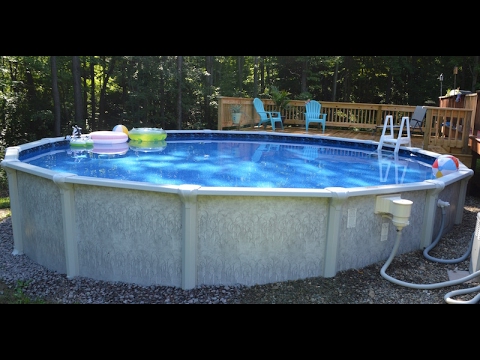How to Install an Above Ground Pool
Are you considering installing an above ground pool in your backyard? Whether you’re looking for a fun way to cool off in the summer or want to create a relaxing oasis for your family and friends, an above ground pool can be a great addition to your outdoor space. In this comprehensive guide, we’ll walk you through the step-by-step process of installing an above ground pool, from choosing the right location to filling it with water and everything in between.
Choosing the Right Location
The first step in installing an above ground pool is to choose the right location for it. You’ll want to select a flat, level area in your yard that is free from any obstructions such as trees, shrubs, or large rocks. Ideally, the area should also be close to a water source and have easy access to electricity for pool pumps and other equipment.
Before you start digging or setting up the pool, be sure to check with your local building codes and homeowners’ association rules to ensure compliance with any regulations or restrictions regarding pool installation. Additionally, consider the amount of sun exposure the area receives throughout the day, as you’ll want to place the pool in a spot that gets plenty of sunlight to help keep the water warm.
Preparing the Ground
Once you’ve identified the perfect location for your above ground pool, it’s time to prepare the ground. Start by marking the perimeter of the pool area using stakes and string to ensure that the space is large enough to accommodate the pool and any necessary safety barriers. Next, remove any grass, rocks, or debris from the area, and use a shovel or a sod cutter to level the ground as much as possible.
To further ensure a level base for your pool, consider using a layer of sand or a pre-formed pool base pad. These materials can help to smooth out any minor imperfections in the ground and provide a soft, cushioned surface for the pool liner. Be sure to compact the sand or base pad thoroughly to create a stable foundation for your pool.
Assembling the Pool
With the ground prepared, it’s time to start assembling the pool. Begin by laying out the bottom rails and connecting them to form the perimeter of the pool. Once the bottom rails are in place, it’s time to install the vertical supports and top rails, following the manufacturer’s instructions carefully to ensure that each component is properly aligned and secured.
After the framework of the pool is assembled, it’s time to install the pool liner. Carefully spread the liner across the bottom of the pool, smoothing out any wrinkles or creases as you go. Be sure to center the liner within the pool and secure it in place according to the manufacturer’s guidelines. Once the liner is in position, you can begin filling the pool with water.
Filling the Pool
Filling an above ground pool with water can be a time-consuming process, but with the right equipment and a little patience, you can have your pool ready for swimming in no time. If possible, use a garden hose connected to a nearby water source to fill the pool, and consider using a pool water testing kit to monitor the water quality as it fills.
As the pool fills, be sure to periodically smooth out any wrinkles or folds in the liner to ensure a smooth, even surface. Additionally, take care not to overfill the pool, as this can put unnecessary strain on the pool walls and liner. Once the pool is filled to the appropriate level, you can begin installing any necessary accessories, such as a pool ladder or filtration system, to complete the installation process.
Maintaining Your Pool
Once your above ground pool is installed and ready for use, it’s important to establish a regular maintenance routine to keep the water clean and safe for swimming. This may include testing the water chemistry regularly, skimming the surface for debris, and running the pool filtration system as needed to circulate and clean the water.
Additionally, be sure to check the pool’s equipment, such as pumps, filters, and hoses, for any signs of wear or damage, and make any necessary repairs or replacements as soon as possible. By staying on top of regular maintenance tasks, you can help ensure that your above ground pool remains a safe, enjoyable oasis for years to come.
In conclusion, installing an above ground pool can be a rewarding project that adds both value and enjoyment to your home. By carefully choosing the right location, preparing the ground, assembling the pool, filling it with water, and maintaining it properly, you can create a beautiful and functional outdoor space that you and your family can enjoy for years to come. So, if you’re ready to take the plunge and install an above ground pool in your backyard, follow these steps to ensure a successful and satisfying experience.




